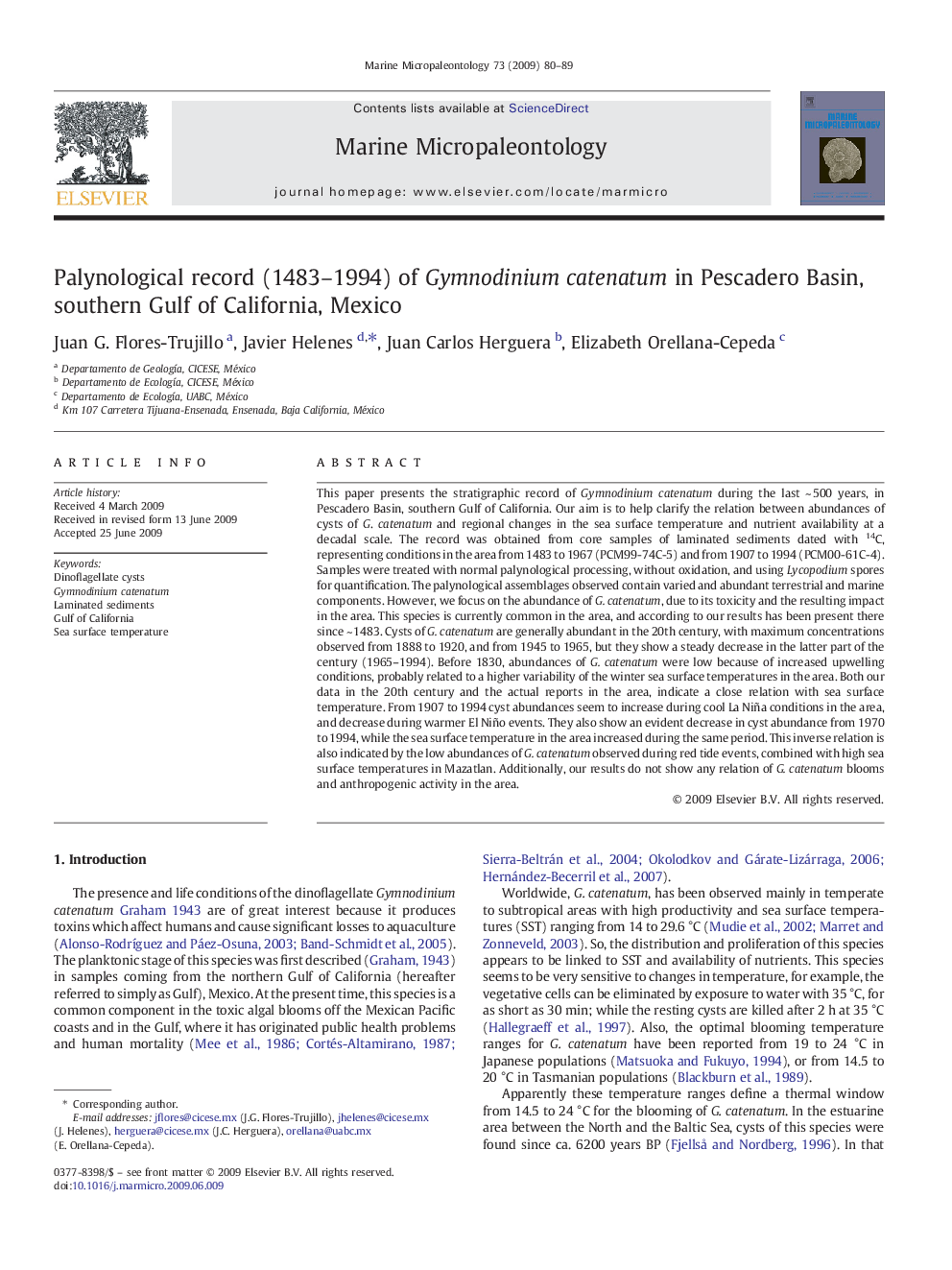| کد مقاله | کد نشریه | سال انتشار | مقاله انگلیسی | نسخه تمام متن |
|---|---|---|---|---|
| 4749282 | 1642212 | 2009 | 10 صفحه PDF | دانلود رایگان |

This paper presents the stratigraphic record of Gymnodinium catenatum during the last ~ 500 years, in Pescadero Basin, southern Gulf of California. Our aim is to help clarify the relation between abundances of cysts of G. catenatum and regional changes in the sea surface temperature and nutrient availability at a decadal scale. The record was obtained from core samples of laminated sediments dated with 14C, representing conditions in the area from 1483 to 1967 (PCM99-74C-5) and from 1907 to 1994 (PCM00-61C-4). Samples were treated with normal palynological processing, without oxidation, and using Lycopodium spores for quantification. The palynological assemblages observed contain varied and abundant terrestrial and marine components. However, we focus on the abundance of G. catenatum, due to its toxicity and the resulting impact in the area. This species is currently common in the area, and according to our results has been present there since ~ 1483. Cysts of G. catenatum are generally abundant in the 20th century, with maximum concentrations observed from 1888 to 1920, and from 1945 to 1965, but they show a steady decrease in the latter part of the century (1965–1994). Before 1830, abundances of G. catenatum were low because of increased upwelling conditions, probably related to a higher variability of the winter sea surface temperatures in the area. Both our data in the 20th century and the actual reports in the area, indicate a close relation with sea surface temperature. From 1907 to 1994 cyst abundances seem to increase during cool La Niña conditions in the area, and decrease during warmer El Niño events. They also show an evident decrease in cyst abundance from 1970 to 1994, while the sea surface temperature in the area increased during the same period. This inverse relation is also indicated by the low abundances of G. catenatum observed during red tide events, combined with high sea surface temperatures in Mazatlan. Additionally, our results do not show any relation of G. catenatum blooms and anthropogenic activity in the area.
Journal: Marine Micropaleontology - Volume 73, Issues 1–2, October 2009, Pages 80–89